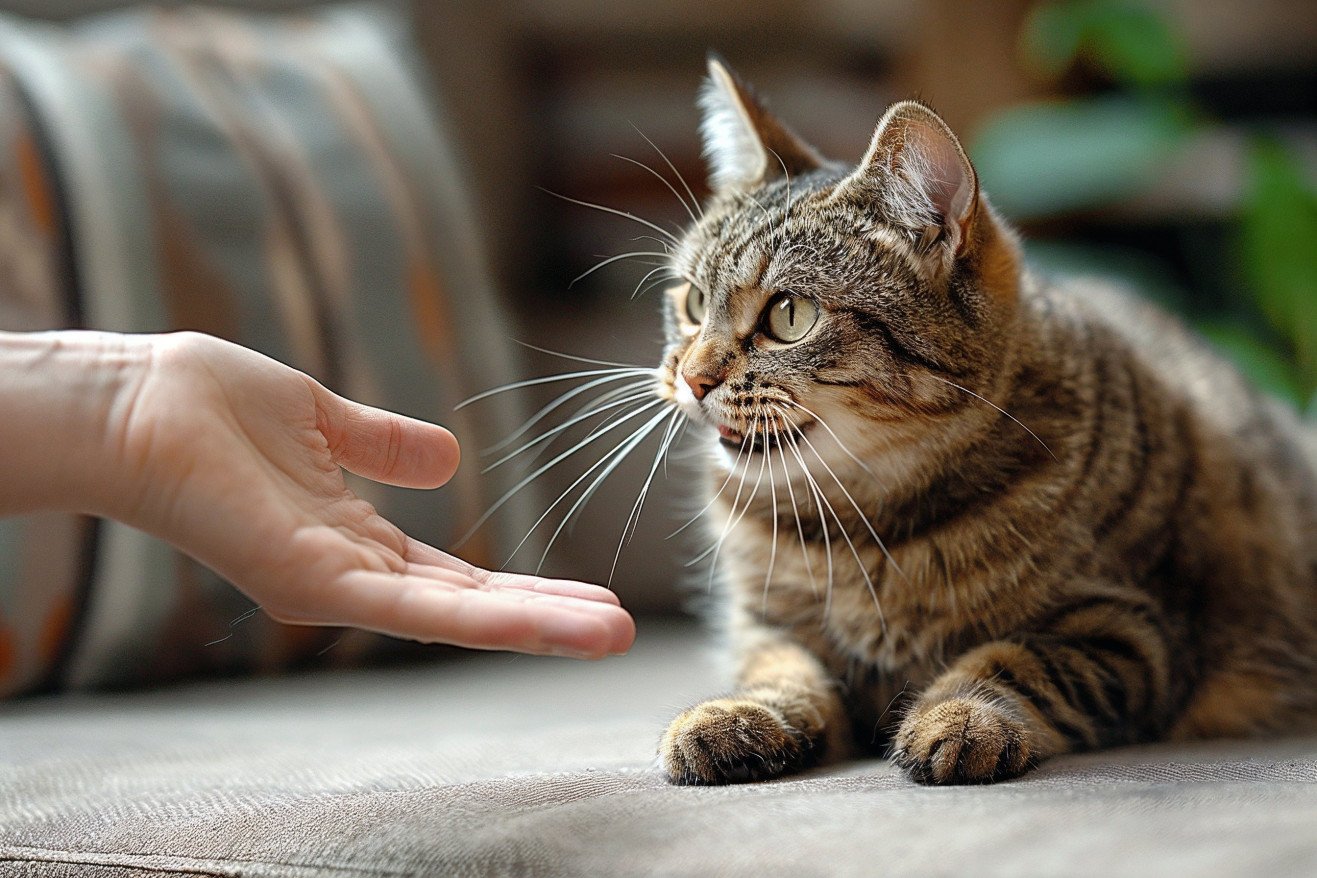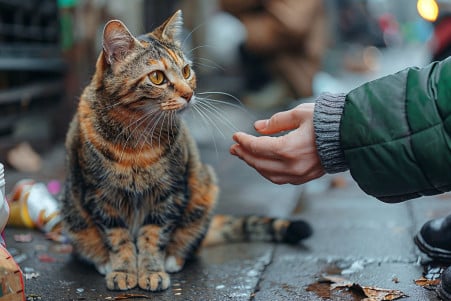Can You Tame a Feral Cat After a Certain Age? Yes, and Here's How
29 May 2024 • Updated 28 May 2024

Anyone who has ever worked with feral cats knows that bringing a feral cat into a home can be a difficult process. However, knowing the right age and methods for socialization can help make the process much easier. Socializing a feral cat becomes much harder after the age of 4 months, when the socialization period ends and the fear of humans becomes more deeply ingrained. Still, it is possible to socialize an older feral cat with enough time, patience, and positive reinforcement.
In this article, we will explore scientific research from animal behaviorists and cat rescuers that looks at the best age ranges for socializing feral kittens and adult cats. This research covers everything from the psychology of cats to the most effective socialization methods for different age groups to the level of commitment needed to successfully socialize a feral cat. Armed with this information, you will be able to decide whether or not to bring an older feral cat into your home and, if you do, how to help it adjust to its new life.
Is it too late to tame a feral cat after a certain age?
The Critical Socialization Period for Feral Kittens
The socialization period for feral kittens is a critical window that determines whether or not they can be successfully socialized and adopted as pets. Kittens can be socialized and adopted if they are rescued and socialized before they are 6 weeks old, with the ideal age being between 4-5 weeks old according to the SPCA of Northern Virginia. The younger the kitten, the faster and more successful the socialization process is likely to be.
Yet, kittens rescued after 6 weeks old may never fully adjust to domestic life, even if they are initially socialized. As the IAABC Foundation Journal explains, the socialization period for kittens ends at approximately 45 days. Meanwhile, older kittens between 12-16 weeks old have a much lower success rate, with socialization becoming nearly impossible after 16 weeks according to Fear Free Pets.
These statistics highlight the importance of rescuing feral kittens during the critical age window of 4-5 weeks old to ensure the best chance of successful socialization. Although some older kittens between 6-10 weeks old may still be able to be "turned around" with intensive socialization over a 2-3 month period according to the IAABC, the likelihood of success decreases dramatically after 12 weeks. Therefore, successfully socializing feral kittens involves recognizing and adhering to the critical socialization period to maximize the likelihood of success.
Socializing Adult Feral Cats: What to Expect
Socializing adult feral cats is incredibly hard, but it can be done with a lot of time and effort. According to Alley Cat Allies, the success rates for socializing adult ferals are “much lower” than those for feral kittens.
This is because adult ferals have not been socialized with humans at a young age. As the PMC review notes, cats that don’t undergo this process during a critical period in their early lives can be unapproachable and exhibit fearful or defensive behaviors toward humans. Even if an adult feral cat is socialized to some extent, some feral traits and behaviors may remain.
Socializing an adult feral cat takes a lot of time, effort, and patience, often over the course of months or even years. As feral cat socializers note on ScaredyCats, it’s important to keep your expectations in check and celebrate any progress, no matter how small. With the right mindset and expectations, it’s possible to socialize an adult feral cat, but it’s likely to be a long and difficult journey.
How to Tell Feral Cats Apart From Unsocialized or Fearful Cats
Feral cats are unsocialized and afraid of people, but this is not the same as being a stray or a shy cat. As noted by Alley Cat Allies, "feral cats are unsocialized outdoor cats who have either never had any physical contact with humans, or human contact has diminished over enough time that they are no longer accustomed to it." Paying attention to a cat's body language, vocalizations, and how they act in different situations can help determine if a cat is feral or simply unsocialized.
According to the ASPCA research cited by The Other End of the Leash, feral cats are less likely to engage in friendly behaviors like chirping, rubbing, or playing, even if they seem similar to unsocialized cats at first. On the other hand, unsocialized cats may act feral at first but will eventually start to explore and interact with their environment as they become more comfortable.
Recognizing these differences is important because it can determine the best course of action for the cat's well-being. Accurately identifying feral and unsocialized cats can help ensure that realistic goals are set and that the cat is placed in the best possible environment for its needs.
How to Introduce a Formerly Feral Cat to Your Home
One of the most important things you can do when introducing a formerly feral cat to your home is to set up a safe, quiet space with hiding spots and high places, says 5 Ways to Help a Semi-Feral Cat Adjust to a Domestic Home. This room, which is often referred to as a "cat room," should include all of the cat's essentials like food, water, litter box, scratching posts, and toys, but it should also have small, easy-to-reach hiding spots that the cat can use to feel safe.
The Adopting Feral Cats: Tips to Integrate Wild Cats Into Your Home guide suggests using positive reinforcement to build trust with the cat, which can be done by feeding the cat on a regular schedule. It also recommends not making direct eye contact with the cat, which can be interpreted as a threat.
It's also important to let the cat come to you for affection and bonding, rather than forcing it, as recommended by the Stray Haven Rescue guide.
You can also gradually introduce the cat to new parts of the house over the course of a few weeks or months, as recommended by the Stray Haven Rescue guide. This will help the cat adjust to its new environment at its own pace and with minimal stress. With time and patience, you can help a formerly feral cat become a happy, well-adjusted member of your family.
Managing Expectations and Embracing the Feral Cat's Journey
Taming a feral cat is a long and arduous process that can take months or even years. Yet, with patience and dedication, it is possible to successfully bring an adult feral cat into a home. However, it's important to manage expectations, as some feral behaviors and traits may persist even in tamed cats.
If a feral cat can't be fully integrated into a home, an outdoor enclosure may be the best option for ensuring the cat's well-being. The focus should be on the cat's quality of life, and any progress should be seen as a victory. The bond between a former feral cat and its caregiver is special and should be celebrated. Accepting the cat's journey, no matter how it unfolds, will lead to a fulfilling and rewarding experience for the cat and its new family.


